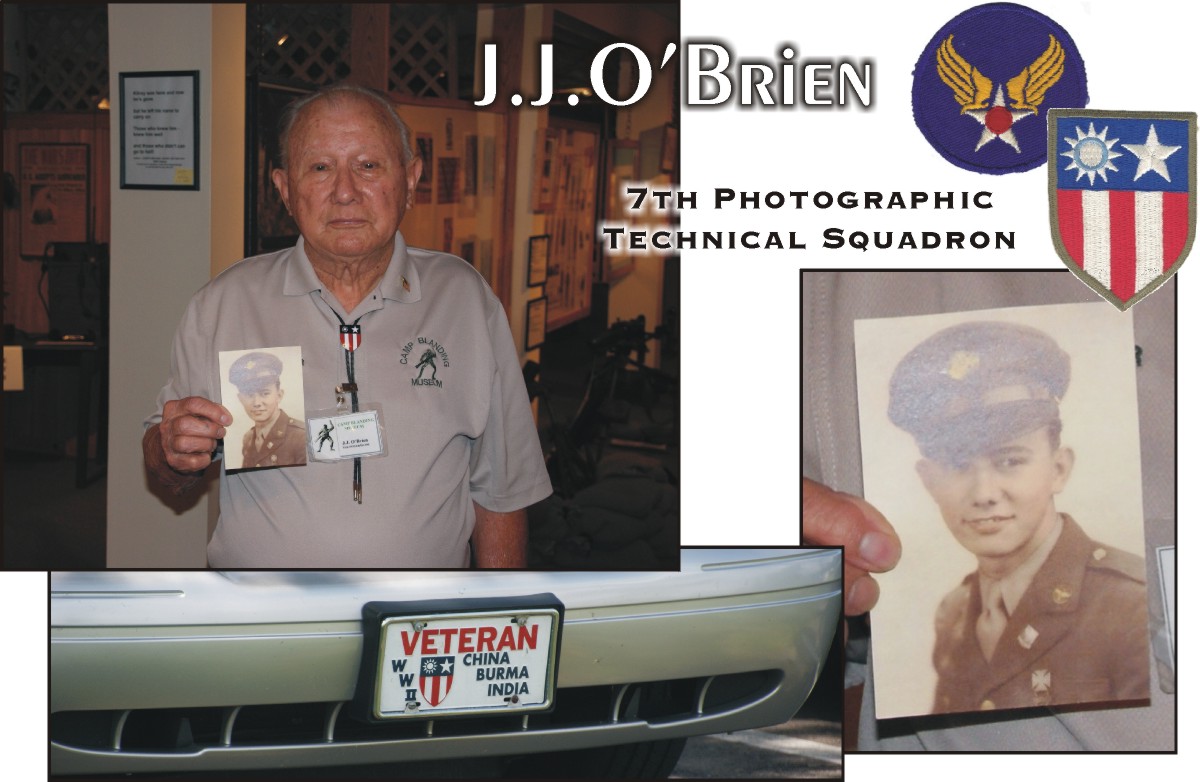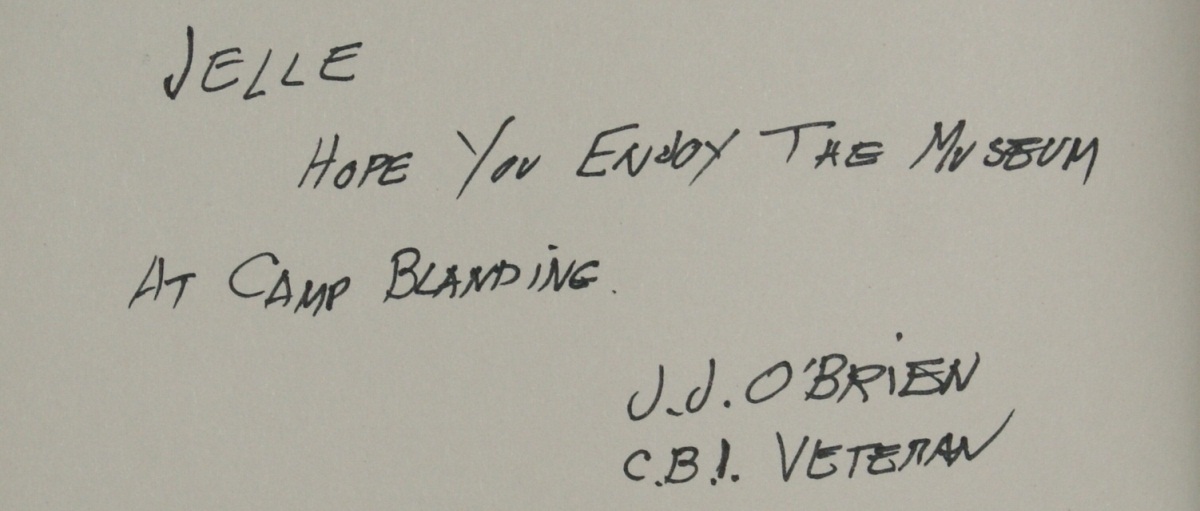Visiting Camp Blanding and met J.J. O'Brien
On my US trip in August 2012, I had the opportunity to visited Camp Blanding, together with my friend Tom Hury and his wife Barbara.
Camp Blanding has been an important military base for nearly 75 years. Home to the Florida National Guard, the 73000-acre camp was built in the late 1930s following a land-swap with the United States Navy.
In 1940, the rapidly expanding U. S. Army leased Camp Blanding for an active-duty training center. Although originally used by the army as a training center prior to overseas deployment, the camp soon became an infantry replacement training center—replacing troops that had been lost in the twin theatres of war raging across Europe and Asia. It also became an induction center, a German POW camp and a separation center. More than 800000 soldiers received training on the camp’s sprawling grounds, including the 1st (Big Red One), 29th (Blue & Gray), 30th (Old Hickory), 31st (Dixie), 36th (Texas), 43rd (Winged Victory), 63rd (Blood and Fire), 66th (Panther), and 79th (Cross of Lorraine) Infantry Divisions as well as the 508th Parachute Infantry Division. These nine "Blanding Divisions" trained men who received 46 Medals of Honor; an additional medal was received by a member of the 508th PIR (one MOH). Of the nine divisions, two went to the Pacific theatre and seven to the European.
In World War II, the federally operated Camp Blanding was Florida’s fourth-largest city. It had its own transportation system, hospitals, health clinics, railroad depot, equipment storage facilities, supply storage, military police, theatres, guest houses, commissaries—everything to ensure that it functioned independently. Following the war, it reverted to state control.
The Camp Blanding Museum and Memorial Park is a celebration of the history of the military installations at this historic camp located just outside of Starke in Clay County, Florida and of WW II, Korea, Vietnam, and Desert Storm conflicts. It is a small museum that sits just inside the main camp gates on State Road 16. The Museum building is one of the few period buildings remaining in the camp; it once was a barracks that housed visiting guests. Today, the first floor serves as the museum that is operated by the Florida Department of Military Affairs. A new museum, to be located across SR 16, is in the works. It is officially recognized as a World War II Commemorative Community.
Inside the museum, I was greeted by a charming WW II veteran named J. J. O’Brien. Mr. O’Brien is a former Sergeant in the Army Air Corps who is presently 86 years old. He was inducted into the Army at the age of 18, following his graduation from high school, and he was transferred to the Army Air Corps in 1943. It was a good job to have, Mr. O’Brien recalls, since it paid between $21.00 and $30.00 a month. His job as a ground photographer/developer stationed him in Calcutta. P-38 aircraft left India and flew “over the hump” into China taking pictures that were then returned to Calcutta, where Mr. O’Brien processed them and turned them over to Photo Intelligence, who marked them with bombing targets. The aircraft stationed in India were also backups for an invasion of Japan.
"We worked on maps about the invasion," Mr. O’Brien recounts, "with the Navy and the Air Corps together." Mr. O’Brien was discharged following the war and did not return to photography, but he has returned to volunteer at the camp he well remembers from nearly 70 years ago.
Thanks Mr. O'Brien, It was an honor to meet and talk with you.



